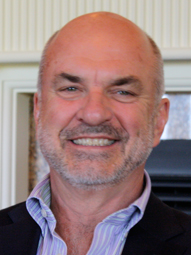The ongoing practice of Mindfulness Meditation enables us to move along a spectrum, from a paradigm of separation to one of non-separation. By “separation” I mean we see ourselves as a subject in a world of objects. Non-separation is a world of impermanence, fluid interaction and life as process and relationships rather than a world of separate entities.

When our paradigm is at the left end of the spectrum, we see the world as divisive, as a reflection of being “subject” to our thoughts and emotions. They arise in us and take control. Those thoughts and emotions have conditioned us for self-protection or personal safety. We are held captive by them (subject to). This left end of the spectrum view of the world, leads to most of our mental/emotional turmoil and suffering. It is not our circumstances that cause our suffering, but our habitual, learned judgements and reactions to those circumstances. We are the source of much of our psychological pain. When subject to this perspective we have no capacity to choose a helpful response. We are “out of control” and when triggered will often react in a non-useful and even harmful knee-jerk manner.
Through Mindfulness Meditation we begin to sense ourselves as something separate from our thoughts and emotions as we practice developing a new habit of observing them and breaking the old habit of being them. As we move along the spectrum through practice, we get trapped in and by our thoughts and emotions less frequently and for less time when triggered by circumstances. Our capacity to retreat back to and rest in pure awareness increases over the time of our practice.
Robert Kegan (Harvard psychologist and author) speaks of this subject/ shift along the spectrum as how our ego develops to better align with what life presents. We move from what he refers to as socialized mind to a self-authored one, and in some cases to a stage of development he calls self-transformed.
The socialized mind, where the majority lives, is one that acts based on the expectations of others (parents, spouses, bosses, cultural norms) either in real time or in unconscious memory. When reacting to memory this is us being subject to our thoughts and emotions built up from past survival and safety strategies. We all have a history of being powerless in a community of people with power. We survived through these learned strategies to deal with power when we had none.
At some point our egos mature and leave behind the socialized mind and become self-authored. Here we assume more accountability and authority for what we choose to do, based on the input of others, but we are no longer owned by that input.
A more advanced developmental shift is from self-authored to self-transformed according to Kegan and others. In this stage of being self-transformed, we see our personal perspective as one among many out there in the mix of an integrated reality. We are no longer subject or attached or “right” about our own point of view and now can continuously update and refine it, through a process of cutting and pasting from the sea of perspectives we are now able to deeply listen to, hold as object, along with our own, until it is time to consolidate into an updated and more useful perspective.
I go for hour long walks most days. When I walk with awareness, I try not to be subject to my thoughts. They are just another phenomenon, along with birdsong, wind in the trees, interactions with other walkers. When we are able to rest in this place of awareness our thoughts are like birdsong. We hear them but don’t get lost inside them.
From this resting place of awareness, we experience the power and freedom of discernment. Our internal reactions to the circumstance we find ourselves in are only one piece of information, often not to be trusted, as accurate or helpful when dealing with the situation. When free of the chains of our thoughts and emotions, we have the capacity for discernment informed by a greater intelligence arising from awareness. This capacity is what enables a wise response. We are free to choose the most useful response in the particular situation.

